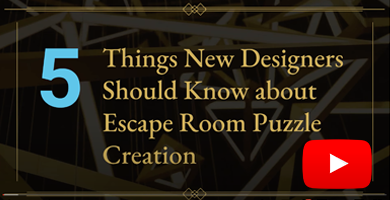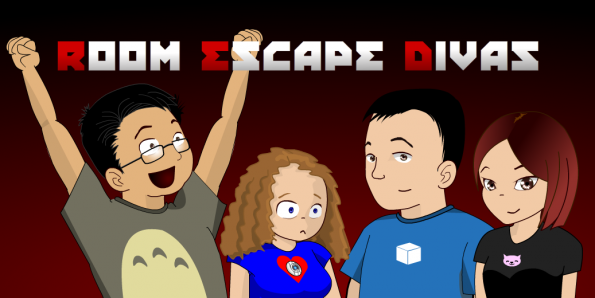I wrote a document about how I create puzzles. It became too large and I stopped working on it. This post is a small excerpt because I find I need to explain my definition of these two terms.
This post was updated November 13, 2020.
For the record, there are many legit types of puzzles which I personally don’t enjoy, but that doesn’t make them bad puzzles. My personal preference shouldn’t cause anyone to eschew one type of puzzle for another!
I love clever puzzles, but more importantly, I seek the coveted “Aha!” moment. When I create puzzles, this is one of my goals! I want the player to fist bump the universe when they finally figure out the answer.
“Aha!” Moment – When you finally get the flash of inspiration that helps you solve a puzzle. This is followed by extreme satisfaction of how clever you are.
A puzzle can have two different stages to them, and I’ve separated1 this into:
- the “Aha!” moment (The HOW to solve stage)
- the Process (The DOING the work stage )
Process Stage – The DO
The process stage of a puzzle requires you to put in some work. In fact, this work could probably be done by a computer. As a player, you are aware of what you need to do, and you have to put in the work to complete it. Upon completion, it may give you a sense of pride for a job well done.
For example, a puzzle may tell you up front to scan a page of text and get individual counts of each vowel2. What you will do with that tally you may not know yet, but this extraction part is pretty straightforward.
Other examples would be jigsaw puzzles, math problems, sudoku puzzles, mazes, basic ciphers, shape algebra, logic deduction problems, searching for hidden objects, word puzzles, trial-and-error puzzles, anything that requires a process to complete.
Aha! Stage – The HOW
During the “Aha!” stage, you don’t know what to do with the puzzle. You haven’t figured it out. You may have all the information but can’t see how they connect.
No amount of hard work will help you solve the “Aha!” stage. It requires an uncommon insight to arrive at the solution. You may have to correlate objects and ideas to arrive at the answer. Some label it as a Lateral Thinking puzzle.
But when you solve it? When you get that insight? “AHA! That’s it!!”
Examples: A riddle, figuring out a pattern or a sequence, connecting the relationship between two unrelated objects.
To get into more technical terms, Liz Cable once explained that solving an Aha! required one to overcome the “cognitive bias of functional fixedness.”
The majority of Aha! puzzles require the player to make a connection between two or more seemingly disparate objects or ideas. A common example in early point-and-click games was the vent closed by screws. The solution was to use a dime to unscrew it instead of a screwdriver3.
The dime has a functional fixedness: it is currency. It is used to pay for a product.
The cognitive bias is that a screw should only be screwed and unscrewed with a screwdriver.
Overcoming this cognitive bias, a player can see a flat edge is needed to unscrew the screw. That’s why MacGyver was so much fun: he was solving Aha! puzzles all the time.
Everything’s Aha! When You’re New to Puzzles
When you first see a sudoku4, you may have no idea what to do. Then you learn there are rules to follow, and when you follow those rules, you will, hopefully, solve the sudoku. Same thing with a logic problem: the rules are given and you need to follow the rules to finish the puzzle.
In a Process puzzle, you have the rules to complete the puzzle. This is logical deduction. This is why a computer should be able to do a process puzzle: you give it the rules.
In an Aha! puzzle, you need to figure out what those rules are! This is logical induction and much harder to program on a computer.
When you’re new to puzzles, there is a range of possibilities on how to solve them. Everything is Aha!5.
When you’ve done a number of process puzzles, you don’t need to figure out the ‘How’ anymore. It just needs to get done6.
For the record, process puzzles aren’t bad. They can be badly executed and tedious, but they aren’t evil in of themselves! They can be immensely satisfying. However, when you solve a sudoku puzzle, you congratulate yourself on being smart. It’s not the puzzle that was ‘clever’. But when you find a good “Aha!” puzzle, you feel an urge to mate with its designer.
Aha! Puzzles Gone Wrong
Ever solve a puzzle and think, “Well that makes no sense.” That’s probably because it didn’t. New designers may try and make an Aha! puzzle by connecting objects or ideas that have no business being connected.
For example, let’s say you find the heights of three different people while exploring an escape room. Eventually, you find out the answer to the puzzle is the sum of all the different heights. Now is a great time to “Ask Why.” Why would you need to add the heights together? What connection is there between people’s heights and adding them together other than the fact that they are numbers? Would you, on a first date, ask for their height and then add it to yours and share the result? No! Why? Because you don’t want to look like a loser.
However, there COULD be a reason to add the heights together. They could be children, and they are imitating that trope of standing on each other’s shoulders, wearing a huge trench coat, and pretending to be an adult. Thus the importance of proper cluing and even narrative!
When creating an Aha! puzzle, think on why the solution is the answer other than “I made it. So be it.” Otherwise, you will get a mess of a puzzle, as outlined in this old article called Death of Adventure Games7.
Tasks
When creating a puzzle dependency chart, the designer will document every obstacle the player will need to overcome and the order they need to be solved.
A lot of the times, we refer to each obstacle, or each gate8, as a puzzle. However, sometimes they aren’t puzzles, they’re simply tasks. If you find a key and it unlocks a door, that’s not really a puzzle.
I bring this up because sometimes a gate has no Aha! or process to them. It’s just a simple obstacle to get past.
Puzzles in Escape Rooms
The majority of puzzles in an escape room tend to be process or tasks. This is for a good reason: they are easier to create, easier to gauge success rate, and easier to estimate solve time. However a room with nothing but process puzzles can get tedious. Ever get close to the end of a room only to discover a make-work, time-sink project masquerading as a fun puzzle? Ugh.
Conversely, a room that requires nothing but Aha! and insight may be too difficult and/or less inclusive. Staring at a puzzle for ten minutes with no clue on what to do is demotivating. Starting off with some easy an accessible process puzzles to get the gears turning eases players into the game.
In my mind, a room that has one or two great Aha! puzzles and clever process puzzles would be great! Of course, there’s far more to puzzle design than the type of puzzle.
Hopefully someone else writes a blog post about that.
By the way, I do discuss this topic with Manda in our Room Escape Divas Podcast. Take a listen if you have an hour to spare.
Note: I have made a slight change to this post. I used to separate Aha! and Process as different puzzle types, however, it was more accurate to define a puzzle having both these aspects.
Footnotes
- The below list doesn’t indicate an order. Sometimes, a puzzle will have you do some busy work and then you will need to have an Aha! to figure out what to do with the results.
- For the record, this isn’t a fun puzzle and is at the extreme end of the tedious things escape rooms have asked me to do.
- Escape rooms normally won’t have this puzzle because we don’t wish to train players to get into the practice of unscrewing things in an escape room!
- I talk about sudoku a lot, but let’s not put them in rooms, please, unless there is a reason to.
- Except searching. If detective shows have taught us anything, it’s to rip apart a room when you first enter it.
- Especially searching.
- I remember playing this. It was as ridiculous as it sounds.
- Gate: A surmountable obstacle that prevents the team from progressing in the game. This can be a door, a lock, a puzzle, a dexterity challenge, an actor, the expanse of time, ignorance, anything that bars access. When implemented in a game, designers refer to this mechanic as gating.




6 Pingbacks